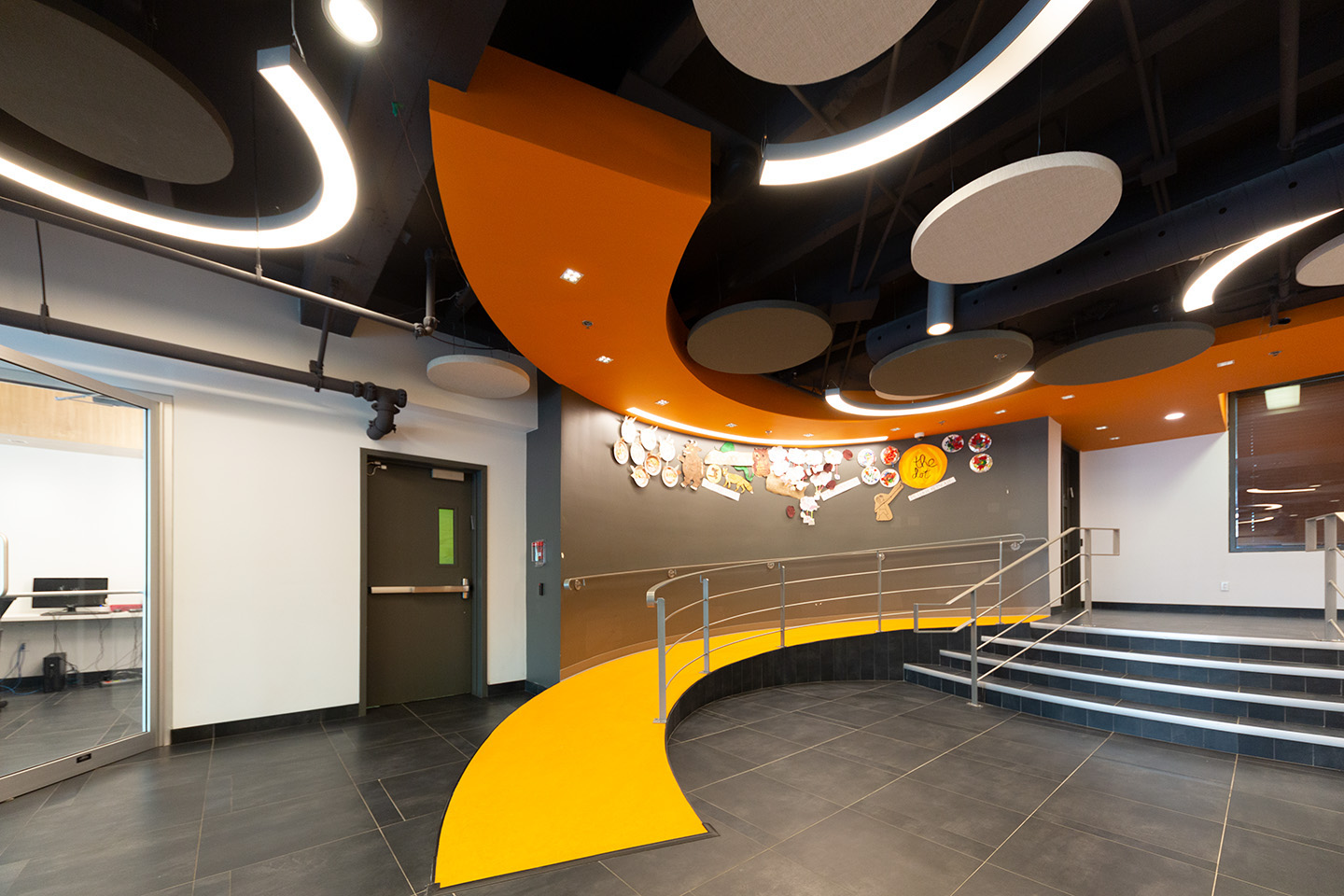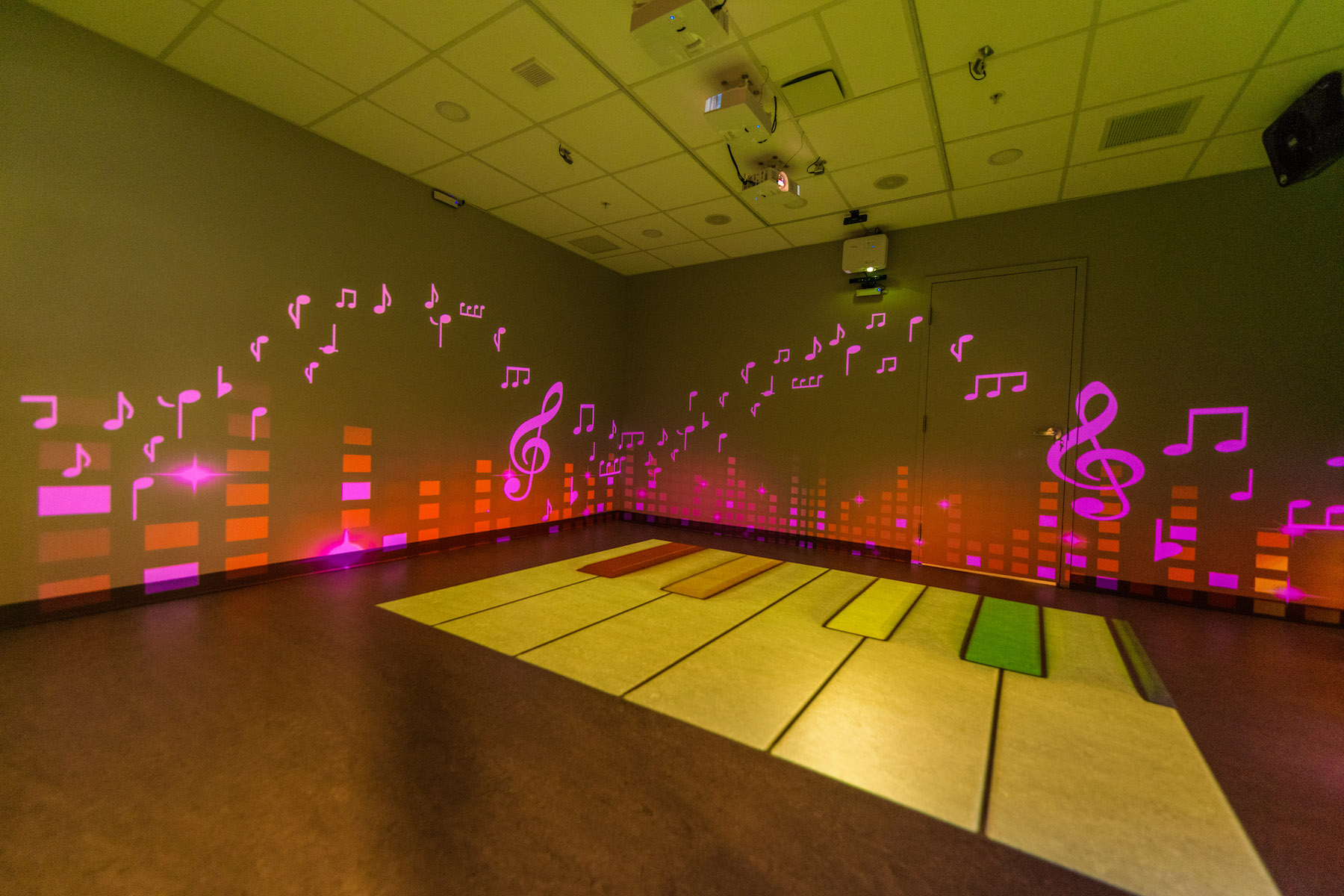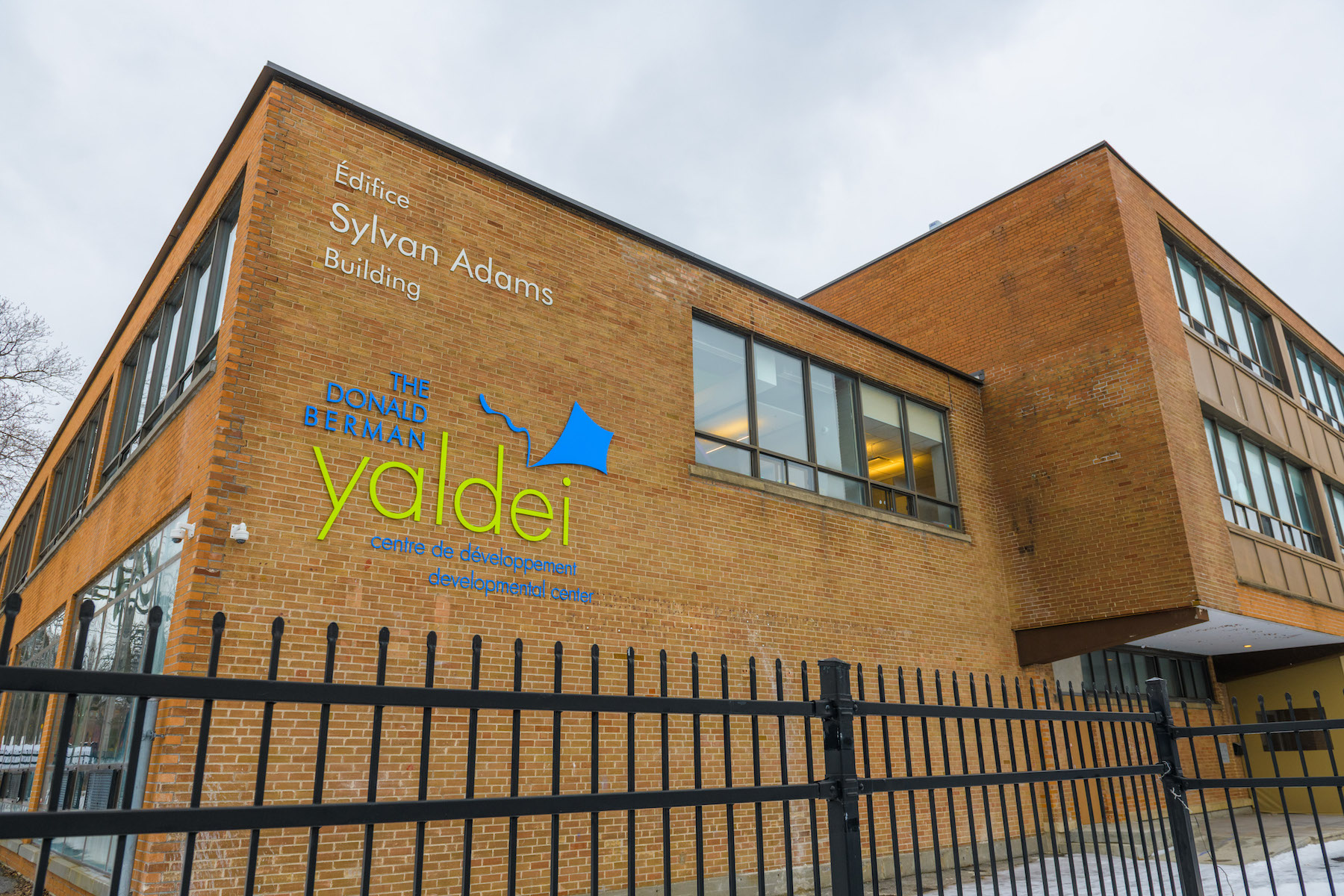Last fall, the Yaldei School in Montreal, Quebec, which provides education and therapy to children ages 4 through 16 with intellectual disabilities, completed a $4.5 million renovation of the three-story former parochial school that it had moved into in 2016. The goal of this project, by the firm Stendel + Reich Architecture, was to create spaces that relieve students’ anxiety and, according to the school, make things fun.
“As a true all-under-one-roof facility, at Yaldei a child can receive every support [he or she needs], and benefit from the collaboration of a multidisciplinary team,” the school stated through a spokesperson. “As such, we are constantly seeking to improve and expand our range of services and therapies modalities, with the aim of reaching every child, and giving each one the best change at success.”
To achieve this, Cliff Stendel, associate principal at Stendel + Reich, studied extensively about the students’ different disabilities, and drew knowledge as well from his firm’s previous experience designing Alzheimer’s facilities.
For example, Alzheimer’s patients often have trouble navigating turns in corridors. So Stendel redesigned Yaldei with oval corridors where, if students turn the wrong way, they just follow the corridor around to where they started.

School uses light as therapy
Stendel also realized, through observation, that students with learning disabilities get distracted easily. To address this, the remodeling of therapy rooms excluded direct windows to the outside; instead, glass walls face the corridor, and on the other side of the corridor are windows that let in sunlight.
Lighting is key to this project. Stendel installed thin light strips in various designs to minimize the effect of lighting on hypersensitive children. So-called RGB lights (for red, green, and blue) also contribute to the children’s therapy, and lend a sense of playfulness to the environment.
The school is roughly 40,000 sf, and was remodeled in phases:
• In 2018, renovation of 7,505 sf on the third floor, which is mostly classrooms for older students, was started, as was 335 sf of washroom space and a 1,475-sf administration area. Floors and ceilings were replaced, new lighting and storage installed, and the rooms were freshly painted. The third-floor reno was completed last fall, and included the addition of eight classrooms, a revamped MEP/HVAC system, an accessible bathroom, a kitchenette in each classroom, and a teacher resource room and library;
• In 2019, the 12,355-sf second floor received a full renovation that included moving separate therapy rooms there, and converting a portion of this space to an early intervention area;
• In 2020, 6,410 sf of main classroom space were renovated, as were 6,425 of the first floor’s 10,580 total square footage.
This renovation project has allowed Yaldei School to grow. In the past few years, its enrollment has increased by 20 percent to 110. (The school has 165 registered students.) The school also collaborates with more than 25 schools in Montreal to provide services to a total of 250 intellectually challenged children per year.

As a result of its renovations, Yaldei Shcool recently initiated an early-intervention group for infants with multiple handicaps and intense physical needs; and added an Art and Social Skills group for girls with high-functioning autism spectrum disorder. These weekly groups help children learn social skills and use art to relieve stress.
Yaldei’s future plans call for adapting more rooms into fully equipped classrooms to meet anticipated enrollment increases.
Related Stories
| Jan 13, 2014
AEC professionals weigh in on school security
An exclusive survey reveals that Building Teams are doing their part to make the nation’s schools safer in the aftermath of the Sandy Hook tragedy.
| Jan 11, 2014
Getting to net-zero energy with brick masonry construction [AIA course]
When targeting net-zero energy performance, AEC professionals are advised to tackle energy demand first. This AIA course covers brick masonry's role in reducing energy consumption in buildings.
| Jan 10, 2014
What the states should do to prevent more school shootings
To tell the truth, I didn’t want to write about the terrible events of December 14, 2012, when 20 children and six adults were gunned down at Sandy Hook Elementary School in Newtown, Conn. I figured other media would provide ample coverage, and anything we did would look cheap or inappropriate. But two things turned me around.
| Jan 10, 2014
Special Report: K-12 school security in the wake of Sandy Hook
BD+C's exclusive five-part report on K-12 school security offers proven design advice, technology recommendations, and thoughtful commentary on how Building Teams can help school districts prevent, or at least mitigate, a Sandy Hook on their turf.
| Jan 9, 2014
How security in schools applies to other building types
Many of the principles and concepts described in our Special Report on K-12 security also apply to other building types and markets.
| Jan 9, 2014
16 recommendations on security technology to take to your K-12 clients
From facial recognition cameras to IP-based door hardware, here are key technology-related considerations you should discuss with your school district clients.
| Jan 9, 2014
Special report: Can design prevent another Sandy Hook?
Our experts say no, but it could save lives. In this report, they offer recommendations on security design you can bring to your K-12 clients to prevent, or at least mitigate, a Sandy Hook on their turf.
Smart Buildings | Jan 7, 2014
9 mega redevelopments poised to transform the urban landscape
Slowed by the recession—and often by protracted negotiations—some big redevelopment plans are now moving ahead. Here’s a sampling of nine major mixed-use projects throughout the country.
| Jan 6, 2014
What is value engineering?
If you had to define value engineering in a single word, you might boil it down to "efficiency." That would be one word, but it wouldn’t be accurate.
| Dec 17, 2013
Nation's largest net-zero K-12 school among winners of 2013 Best of Green Schools award
The Lady Bird Johnson Middle School in Irving, Texas, was named a winner of USGBC's annual award, along with nine other schools, individuals and communities working toward the common goal of healthy, high-performing learning places.

















